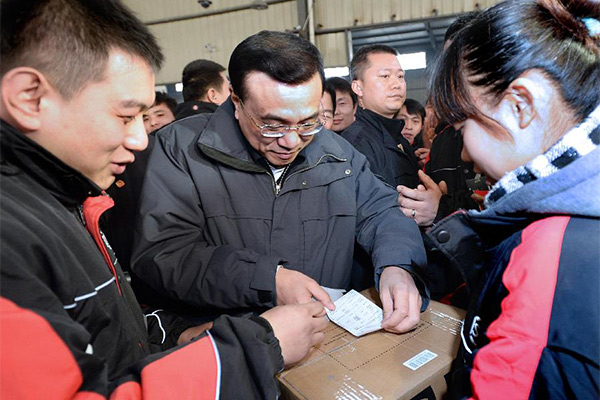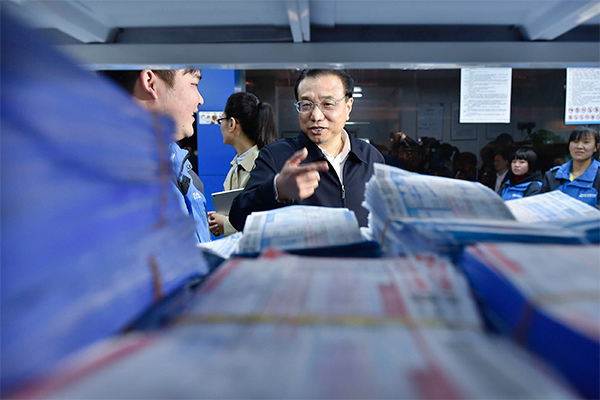
Premier Li Keqiang visits a local office of SF Express in Xi’an, Shaanxi province, on Jan 27, 2014.
A plain, white package, sent by a tea farmer in south China’s Guizhou on Dec 20, became a landmark in the history of China’s express delivery sector — it was the 30 billionth delivery in 2016.
This year the total deliveries rose by 10 billion, or 53 percent more than 2015.
“The express industry has become a dark horse in the development of Chinese economy,” said Premier Li Keqiang when he visited Xi’an SF Express on Lunar New Year’s Eve in 2014.
In 2014, the Premier praised on many occasions the role the industry was playing in stimulating consumption and promoting employment.
The same year also witnessed world’s largest annual delivery volume of 10 billion parcels in China, a record broken with 20 billion the next year.

Premier Li visits an express distribution center in Yiwu, Zhejiang province, on Nov 19, 2014.
The sector plays a critical role in promoting the real economy, especially in boosting employment. In 2015, more than 2 million jobs, including couriers, delivery sorters and truck drivers, were created, according to a report by Beijing Jiaotong University.
Besides, it helps online sales of agricultural products. In the first 10 months of 2016, farm goods worth 100 billion yuan ($14.4 million) were delivered. Heilongjiang province has benefited the most, with deliveries up 80.29 percent in the first nine months of 2016 over 2015.
It indicates a huge growth potential for the northeastern region, said Premier Li at a conference in November.
Meanwhile, the delivery sector is bringing rapid changes to manufacturing enterprises through Internet Plus logistics.
During the country’s biggest shopping carnival on Nov 11 this year, Midea Group Co. worked with Cainiao Network, a big data company, to integrate online and offline logistics distribution, and hence cut cost by 40 percent.
The express delivery sector, said Premier Li, has created employment opportunities and a new lifestyle, and has helped bridge rural and urban divide.
